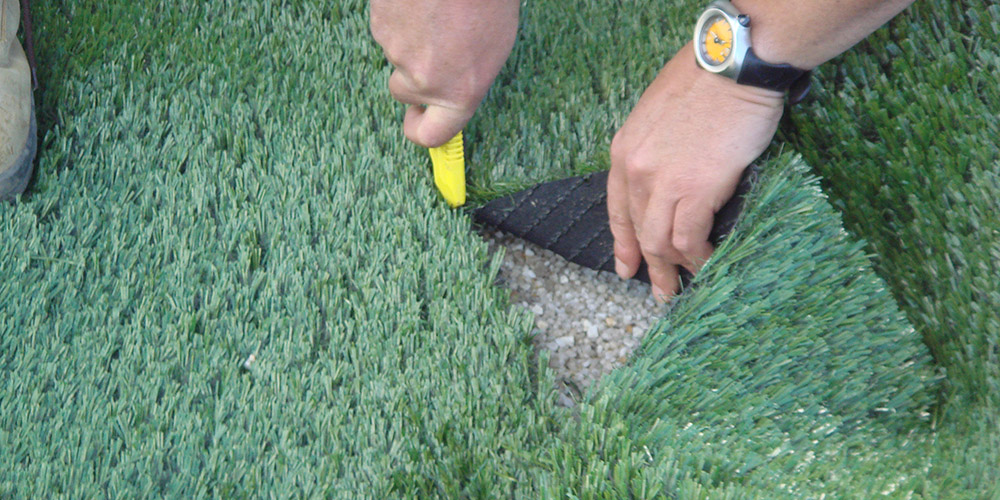The cheapest way to install artificial grass is to buy your own products and do the installation yourself. Be mindful of the risks of scrimping, though. If fake grass isn't put in right, it can cause drainage problems and look bad. It may also need to be replaced and put in again, which can be expensive.
This post may enable you to make significant financial savings if you are willing to put in a little work. Continue reading to see how you may soon take advantage of an inexpensive fake grass lawn.
Look for Sprinklers and Electrical Wires
Ensure there are no buried power lines, fiber optic cables, or wiring before you begin preparing the area for your new fake grass lawn. Also, ensure that all sprinkler heads have been covered or taken out of your irrigation system.
Dig up the Old Grass
You must remove any existing grass, dirt, and plants from the area before you can begin installing artificial grass. Typically, this will involve digging around 3 to 4 inches.
To begin, you lift the sod to reveal the bare ground. For clearing a smaller space, a sod lifter will be enough. You may effectively remove clods by cutting beneath the root systems with the razor-sharp steel edge.
You can rent a sod-cutting machine if you're covering a sizable area with artificial grass.
The sod can be removed once the area has been reduced to bare, hard earth and all rocks and stray tree roots have been eliminated. It can be wise to rent a dumpster if you have a large project.
Compaction of the Soil
Using a ground roller to roll over the bare dirt will help level the surface and prevent a lumpy or uneven installation. However, renting a compaction force plate compactor will yield the best results. In order to prepare a surface for asphalt or concrete, professionals use plate compactors.

Establish a Perimeter
Install sturdy edges on all base sides to keep it compressed and guarantee the grass stays put. To establish that border, you can use metal, bricks, wood, blocks, or synthetic polyboard.
A border around the perimeter will hold the base in place. Without the border, your subbase may erode, causing your artificial grass to become lumpy and dipped, potentially requiring reinstallation. Additionally, holding your artificial grass in place is a perimeter border.
Placing a Weed Cloth
You should put down a weed cloth now that your ground has been prepared. A thick, porous layer of polypropylene or plastic known as "weed cloth"—also known as a "weed fabric barrier" or "road cloth"—allows drainage but prevents shoots and roots from growing through it.
Additionally, weed cloth aids in keeping the sub-base and the soil above it apart. This means your subbase is less likely to sag or stop working after extended use.
Install a Subbase
As the soil is wet, it expands. When it dries out, it contracts. Within a season or two of installing fake grass on top of compacted soil, your lawn will have creases and unevenness. To avoid these problems, artificial grass installers cover the earth with a non-expanding sub-base.
Cut and Measure the Turf
Unroll your grass and let it sit in the sun for a couple of hours before measuring and cutting it. Your task will be easier because the blades will be straightened, and the backing will warm up. Additionally, it will allow you to check the cloth for flaws before you begin cutting.
Add Infill
It gives your lawn more weight, keeping it from bowing when the temperature changes. Infill supports the fibers and prevents them from matting and deteriorating over time.
Conclusion
It is not inexpensive or simple to install an artificial grass lawn. However, you may save a lot of money by doing the work yourself if you have any landscaping experience or are willing to learn. Contact the artificial turf factory to get advice before installation, then your task will be easier and quicker.


